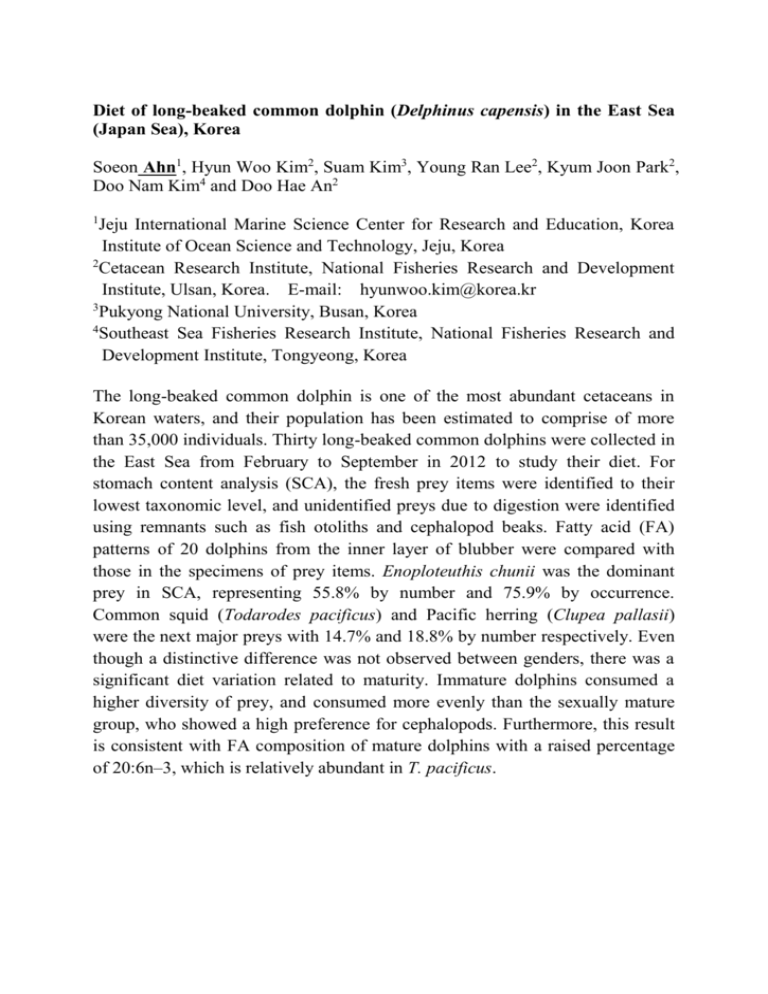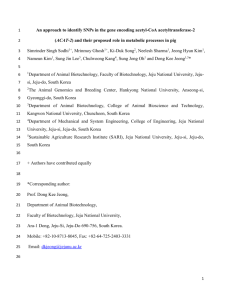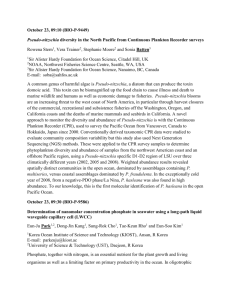10413_ahn-ed-from-S3_AP - PICES
advertisement

Diet of long-beaked common dolphin (Delphinus capensis) in the East Sea (Japan Sea), Korea Soeon Ahn1, Hyun Woo Kim2, Suam Kim3, Young Ran Lee2, Kyum Joon Park2, Doo Nam Kim4 and Doo Hae An2 1 Jeju International Marine Science Center for Research and Education, Korea Institute of Ocean Science and Technology, Jeju, Korea 2 Cetacean Research Institute, National Fisheries Research and Development Institute, Ulsan, Korea. E-mail: hyunwoo.kim@korea.kr 3 Pukyong National University, Busan, Korea 4 Southeast Sea Fisheries Research Institute, National Fisheries Research and Development Institute, Tongyeong, Korea The long-beaked common dolphin is one of the most abundant cetaceans in Korean waters, and their population has been estimated to comprise of more than 35,000 individuals. Thirty long-beaked common dolphins were collected in the East Sea from February to September in 2012 to study their diet. For stomach content analysis (SCA), the fresh prey items were identified to their lowest taxonomic level, and unidentified preys due to digestion were identified using remnants such as fish otoliths and cephalopod beaks. Fatty acid (FA) patterns of 20 dolphins from the inner layer of blubber were compared with those in the specimens of prey items. Enoploteuthis chunii was the dominant prey in SCA, representing 55.8% by number and 75.9% by occurrence. Common squid (Todarodes pacificus) and Pacific herring (Clupea pallasii) were the next major preys with 14.7% and 18.8% by number respectively. Even though a distinctive difference was not observed between genders, there was a significant diet variation related to maturity. Immature dolphins consumed a higher diversity of prey, and consumed more evenly than the sexually mature group, who showed a high preference for cephalopods. Furthermore, this result is consistent with FA composition of mature dolphins with a raised percentage of 20:6n–3, which is relatively abundant in T. pacificus.











